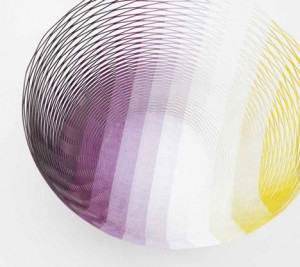A brief summary taking into account an article, Primative Future, by Sou Fujimoto and a case study on Wall House by Frohn &Rojas.
By identifying and forming relations between two or more things in any instance will help conclude logical and meaningful decisions. In architecture it is vital to identify the relations between the natural and cultural & social environments. The natural environment impacts human decisions within the built environment, from climate and weather to terrain and vegetation type. It enhances our senses of smell, taste, touch, hearing and sight, in turn heightening our quality of life and creating a positive atmosphere within the spaces we surround ourselves in.
It is apparent that a large percentage of architects have lost touch with nature as a design informant. Instead of making use of the existing natural elements around, architects will contribute to tearing it down so they can reconstruct functional and artificial environments that segregate them from one another. An article Primitive Future by Sou Fujimoto describes a different approach to architecture by utilizing the existing natural environment and how architects can merge buildings with it rather than perceive it as a boundary. Fujimoto contrasts the concept of a nest with a cave, where the nest represents a functional hospitable place and the cave a naturally occurring place that whether hospitable or inhospitable for a person to inhabit is still suitable to live in. A cave does not have the functional spaces and attributes like that of a nest to its inhibitor but its contours and random forms can be reinterpreted into anything if imagination is applied, “When people set foot in a cave, they rediscover how to inhabit these geographical features” (Fujimoto, 2008, p.130). Like the nest, the conventional building is closed off to the environment around it forming a distinct boundary between what is inside and what is outside, between what is private and what is public, between what is natural and what is built. There is no boundary between a cave and its surroundings and there is a gradation between the outside and the inner most crevices of the cave, a transition between the two spaces that merge with one another. This series of successful change from one space to another is what needs to be existent in architecture, the places in which we travel to and from need to merge with one another creating eventful spaces to journey though.
A prime example relating to Fujimoto’s philosophy is Wall House, located in Santiago de Chile and designed by Frohn & Rojas, where the notion of eliminating boundaries between inside and outside space is achieved through gradation. Traditional walls of a house are broken down into a series of four delaminated layers; concrete cave, stacked shelving, milky shell and soft skin. This creates a transition between the inside and outside environments merging them together so there is no distinct boundary between the two. The progression of the layers takes on the notion of a natural occurrence just as Fujimoto describes in a cave (Fujimoto, 2008, p.130) where a gradation of light, visibility and space occurs from the enclosed, dark and private internal space towards the exposed bright exterior environment. The materiality of the layers control visibility and filter light through the in-between spaces creating a haze from interior to exterior space, the layers change in materiality from dense to less dense to openness forming an atmospheric relation to that of a cave with the natural environment.
Architects needs to design buildings that interrelate with the surroundings. The challenge lies in attempting to form a gradation from one space to another. Sou gives an example of how ordinary architecture does not embrace the series of successful change between one thing and another, stating that “our world is clearly arranged according to the word ‘function’ as is clearly divided into black and white. But isn’t real life sustained by the innumerable acts that lie between them?” (Fujimoto, 2008, p.132). Relational logics define the importance of interconnections between architecture and the natural environment, building on the human senses.
The notion of forming a successful sequential change between environments is an interesting topic in which to delve deeper into. To discover a way to introduce architecture into the in-between spaces, to dissolve boundaries between the built and un-built, consequently merging environments.

